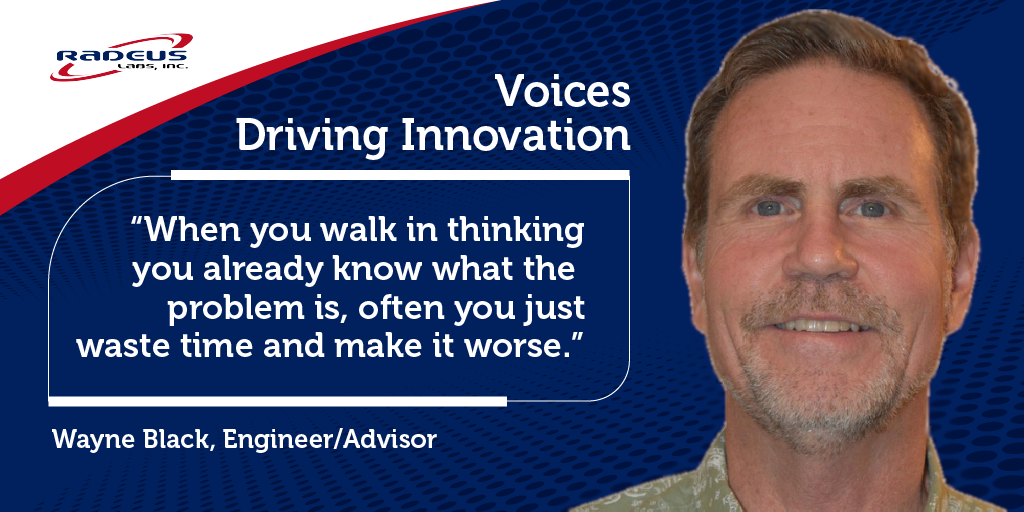 At XPONENTIAL 2025 last week, one thing was clear: technology is moving faster than the regulations meant to govern it. Hosted this year in Houston, the conference brought together a vibrant mix of cutting-edge tech, lively networking events, and a strong showing of state-level initiatives focused on autonomous systems.
At XPONENTIAL 2025 last week, one thing was clear: technology is moving faster than the regulations meant to govern it. Hosted this year in Houston, the conference brought together a vibrant mix of cutting-edge tech, lively networking events, and a strong showing of state-level initiatives focused on autonomous systems.
As a newcomer to the event, Juliet Correnti of Radeus Labs noticed the show offered a clear look at where the industry is headed—highlighting a wide range of small UAVs, the pervasive role of AI, and a commercial market actively prototyping and refining new ideas. While the defense presence was noticeably thinner than expected based on previous years' reports, which was a shame, the energy on the floor was unmistakably forward-looking.
What Stood Out at XPONENTIAL 2025
One particularly compelling theme this year was retrofitting—repurposing existing platforms rather than reinventing the wheel. Conversations with teams like Airbus and Neya Systems revealed a preference for upgrading proven vehicles with autonomous capabilities, rather than building untested ones from scratch.
This practical, phased approach struck Juliet as both technically smart and strategically sound, especially compared to some of the moonshot concepts on display (Wisk Aero’s massive air taxi, for example, looked more at home in a sci-fi film than today’s regulatory environment). And in a climate where recent crashes have raised safety concerns, retrofitting may prove to be the bridge between legacy systems and next-gen autonomy.
The real story, however, was how far ahead commercial innovation has surged—particularly when it comes to AI and autonomy. Nearly every booth and conversation touched on AI applications, from flight automation to smarter GPS and sensor tech. Some notable takeaways:
- AI was everywhere. From small drones to major platforms, exhibitors showcased how artificial intelligence is now core to autonomous operations.
- Regulations are lagging. FAA efforts to define 3D airspace corridors and licensing frameworks are ongoing, but many attendees agreed they’re behind the curve.
- Use cases are exploding. From real estate to research, logistics to retrofits, UAVs are being adapted for a growing range of commercial and government applications—many of which didn’t exist a few years ago.
All in all, XPONENTIAL 2025 served less as a snapshot of the industry today, and more as a preview of where it’s racing next. The commercial sector is no longer waiting for defense to lead; it’s innovating aggressively—and regulators will need to play catch-up. For those watching closely, that tension between technological potential and regulatory lag is not just a challenge. It’s the defining frontier.
Next Up: TechEx North America!
The momentum doesn’t stop in Houston.
Next, Radeus Labs will be represented by Juliet at TechEx North America, happening June 4–5, 2025, at the Santa Clara Convention Center. This two-day event brings together thousands of tech leaders, engineers, and innovators focused on applied AI, cybersecurity, infrastructure, and emerging technologies. It’s where roadmaps accelerate, integration strategies sharpen, and next-gen ideas turn into action.
Expect sessions that go beyond the hype—covering real-world AI use cases, edge infrastructure strategies, and enterprise transformation at scale.
TechEx North America is actually seven conferences in one, combining multiple disciplines under one roof:
- A
 I & Big Data – Insights into artificial intelligence, analytics, and machine learning
I & Big Data – Insights into artificial intelligence, analytics, and machine learning - Cyber Security & Cloud – Strategies to secure digital infrastructure and combat threats
- IoT Tech Expo – Breakthroughs in connected devices and industrial IoT
- Digital Transformation Week – How tech is reshaping enterprise operations
- Intelligent Automation Conference – Tools that boost performance and efficiency
- Edge Computing Expo – Processing data closer to the source to reduce latency
- Data Centers Expo – Exploring the infrastructure behind modern computing,
With all these tracks happening side by side, it’s a rare opportunity to see where enterprise tech is heading—from every angle.
Standout sessions at the show include:
 Intelligent Automation: Trends and Future Directions – Lalit Verma (AAA Mountain West Group) explores no-code platforms, AI/ML integration, and the workforce strategies shaping automation’s next chapter.
Intelligent Automation: Trends and Future Directions – Lalit Verma (AAA Mountain West Group) explores no-code platforms, AI/ML integration, and the workforce strategies shaping automation’s next chapter.- AI Agents: Rethinking Automation – A Blue Prism executive discusses the shift from static tasks to dynamic, intelligent systems.
- From Firefighting to Future-Ready: AI-Driven Observability – IBM’s Jennifer Fitzgerald shows how AI can proactively optimize complex IT environments.
- The Power of Generative AI and Intelligent Automation – A panel from BD, RingCentral, IBM, and Wiley shares how GenAI is transforming workflows and decision-making.
- Blueprint for a Robust Automation Ecosystem – Leaders from Korn Ferry, City National Bank, DTCC, and Walmart discuss building scalable frameworks with AI, RPA, and analytics.
Each of these sessions delivers what conference-goers crave: tactical insights, lessons from the frontlines, and inspiration to rethink what’s possible across operations, IT, and leadership.
Let’s Talk in Santa Clara
 If XPONENTIAL sparked something for your team—or if TechEx are on your radar—Juliet would love to connect.
If XPONENTIAL sparked something for your team—or if TechEx are on your radar—Juliet would love to connect.
👉 Schedule time with Juliet during TechEx North America 2025. Let’s talk infrastructure, intelligence, and what comes after the proof-of-concept. We’re all building what’s next—let’s do it together.

.png)




